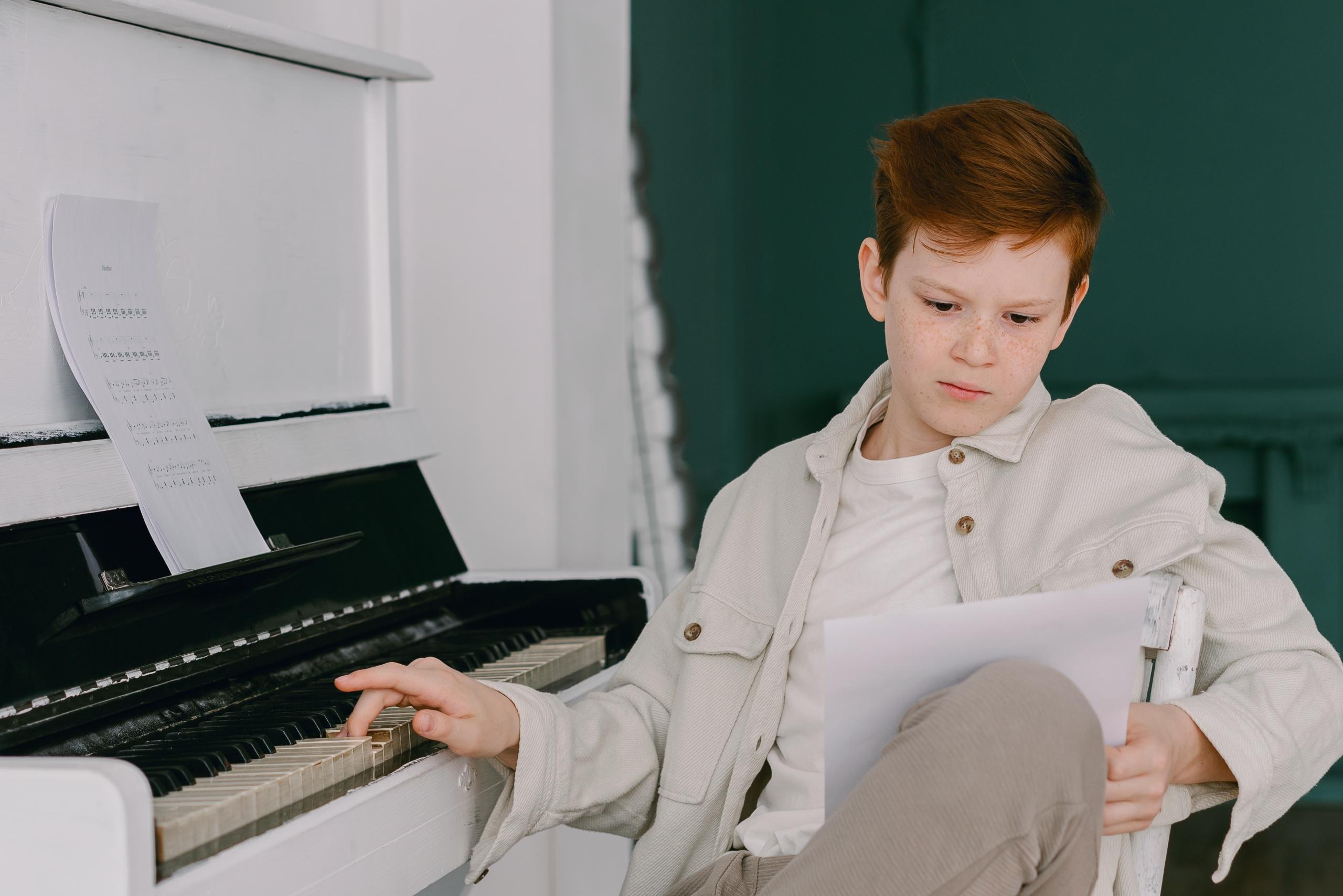If you have started learning how to play the piano then you will know that it is no simple matter. Not only that, but instruction techniques are so varied. Finding the method and speed of learning to suit your personality is important.
In days gone by solfege lessons were introduced at a very young age, but today the solfa system is taught independently of general piano instruction.
If you are wondering about methods for how to learn the piano you might want to know when to introduce solfeggio lessons into your practice. If so, keep reading because this article is for you.
Want to give private lessons?
Join the Superprof community and share your knowledge with inquiring and motivated students.
The Solfa System: A Skill for Learning the Piano
When you learn solfege, it is more like gaining an entire toolbox of useful tools to help you with your music instruction, regardless of the instrument that you are learning.
Even if solfeggio lessons are not mandatory for your piano learning, the benefits of taking them are endless.
Much like a novel, music needs to be read. When you learn solfeggio, the process is the same as learning how to read. To understand music, you’ll need to know how to change your piano pitch as well as how to combine notes and chords.
The foundation of most piano courses entails learning how to read sheet music and understand the piano’s range of rhythms.
When to Introduce Solfege Lessons

Beginning piano lessons at a young age has its benefits. This is mainly because children, who are like sponges, tend to pick up new concepts like reading music, playing scales and learning chords more easily. The same applies to learning the solfa system.
Our recommendation is for beginner piano students to learn solfege and piano simultaneously. Young students in particular have enough headspace to improve piano skills through various methods for learning the piano. Being able to easily absorb multiple skills is not necessarily the case for adults because they tend to have lower attention spans due to the general stress and responsibility that goes with being an adult.
Solfege lessons should be interactive and fun with the keyboard being added into the mix. The role of the teacher is to adapt various methodologies according to the student’s personality and abilities.
There are no precise rules about when to introduce the solfa system into a class. A teacher may choose to ask a student to practice how to learn solfeggio at the beginning or end of a class.
It’s important that solfeggio lessons do not get in the way of the coherence of a general piano lesson and this is up to the music teacher to ensure.
Solfeggio lessons at the beginning of a class allow the student to devote all their attention to it. The only risk is that the student’s concentration span may be diminished for the main part of the lesson. Students could learn solfege at the end of the class and end on a high note. The only downside to this order is that the student won’t benefit from the solfege knowledge gained in the rest of the lesson.
Most piano teachers will know when it is the ideal time to introduce solfege lessons into general piano practice. Usually, it will be followed by practising a piece of music so that there is the advantage of putting the theory into practice.
Want to give private lessons?
Join the Superprof community and share your knowledge with inquiring and motivated students.
Why Learn Solfege?
When used correctly, solfege will enable the student to play more freely and independently. Furthermore, it will help structure rhythmic training which is when a student learns to distinguish between rhythms. Solfege also helps to better understand composition structure and sheet music.
In short, solfege means knowing how to reading music.
Being able to read music is fundamental if you want to compose music and play any genre of music.
Above all, music should be enjoyed, just like reading. To read, one needs to learn how to read. The truth is that deciding to learn solfeggio is no easy task. It demands discipline and motivation, but the good news is that today’s teaching methods can make it a fun skill to learn.
Firstly, when you learn solfege in conjunction with learning your instrument it allows you to immediately hear what you have learnt. Good advice to maximise enjoyment is to focus on playing more than the memorisation of technical terms.

Bear in mind that some of the world’s greatest musicians, like Jimmy Hendrix for instance, never mastered solfege. Be encouraged that that did not stop them from composing music and playing outstanding music. Generally speaking, to avoid stumbling over your piano music or to get over writer’s block as a composer, solfege is an excellent tool to help you play your best music.
As you progress in knowledge, much like driving a car, you will notice how your automatic reflexes will develop very quickly. In fact, in only a few lessons you could become familiar with the basics. Try these tips to progress quickly:
- Self-taught players: like using a metronome, which is a good method to learn how to achieve rhythm, with perseverance learning solfege is also entirely possible.
- Students with a private teacher: be prepared for learning solfege during piano lessons for kids. Many piano teachers like to start the lesson with solfege before the main piano practice.
- Students in a music school: be prepared to take group solfege classes which will allow you to read sheet music more easily. A solfege curriculum will include note writing, note taking and dictation.
A few indispensable solfege basics you can expect to grasp:
- How to distinguish notes: for example, that could be a whole note, half note or quarter note.
- How to distinguish your sharps from your flats and rests.
- How to read a staff in G and F keys. C key is usually more advanced.
- Learn about measures and rhythms.
Learn Solfege as a Beginner Pianist
Well, yes.
What’s most important to retain, is that solfege isn’t an obligatory step to starting those beginner piano lessons. As we’ve seen, it’s possible to have fun behind a keyboard without knowledge of sheet music or rhythm.
Learning how to read music in an engaging and fun way will always benefit you as a musician whether you are learning piano or another instrument. The advantages that it offers when learning to read and play sheet music, as well as for composition, are profound.
For music teachers, it is essential that the element of enjoyment in a lesson is never overlooked. Having fun can be an important motivator to learning and indeed, advancing more quickly.
For more tips like these, you could explore the world of online piano lessons. The internet is filled with interesting, entertaining and free solfege and piano tutorials.
Piano lessons online can provide you the flexibility you need, along with access to a wide range of teaching styles.
Further Advice for Learning Piano and Solfege
Why not be daring and wise at the same time and learn piano and solfege together?

Learning solfege to play the piano will require more motivation and investment than learning an easy piano song from the radio. So while more challenging, it will also increase your confidence and allow you to advance your piano playing more quickly. Improving in the two aspects simultaneously is possible.
Before long, you will notice that you can play not one, or two pieces, but rather all the piano music that you want! This will keep you motivated to keep improving.
When it comes to the student-teacher relationship for piano and solfege training, it is vital that the relationship is built on listening and mutual trust. For teachers, who are teaching both disciplines, objectives for each lesson should be set in advance. This means taking the time to prepare carefully selected exercises that are appropriate to the age and learning stage of the student.
If you are taking private piano lessons, you will be spending a lot of one-on-one time with your teacher every week. This means that is essential that you get along well. Choose a teacher who understands your objectives and connects well with your personality. If at first, you don’t find the right match, keep trying.
When you find a professional piano teacher who truly loves music, you will notice this passion is transmitted to you. It is this passion that will motivate you to persevere through learning music theory, playing the middle C key, and other challenging tasks.
A good tip to maintain momentum, direction and motivation during solfege training is to ensure that you follow a schedule. Try playing for an hour every day or second day because regularity is key to your musical progress.
Want to give private lessons?
Join the Superprof community and share your knowledge with inquiring and motivated students.





